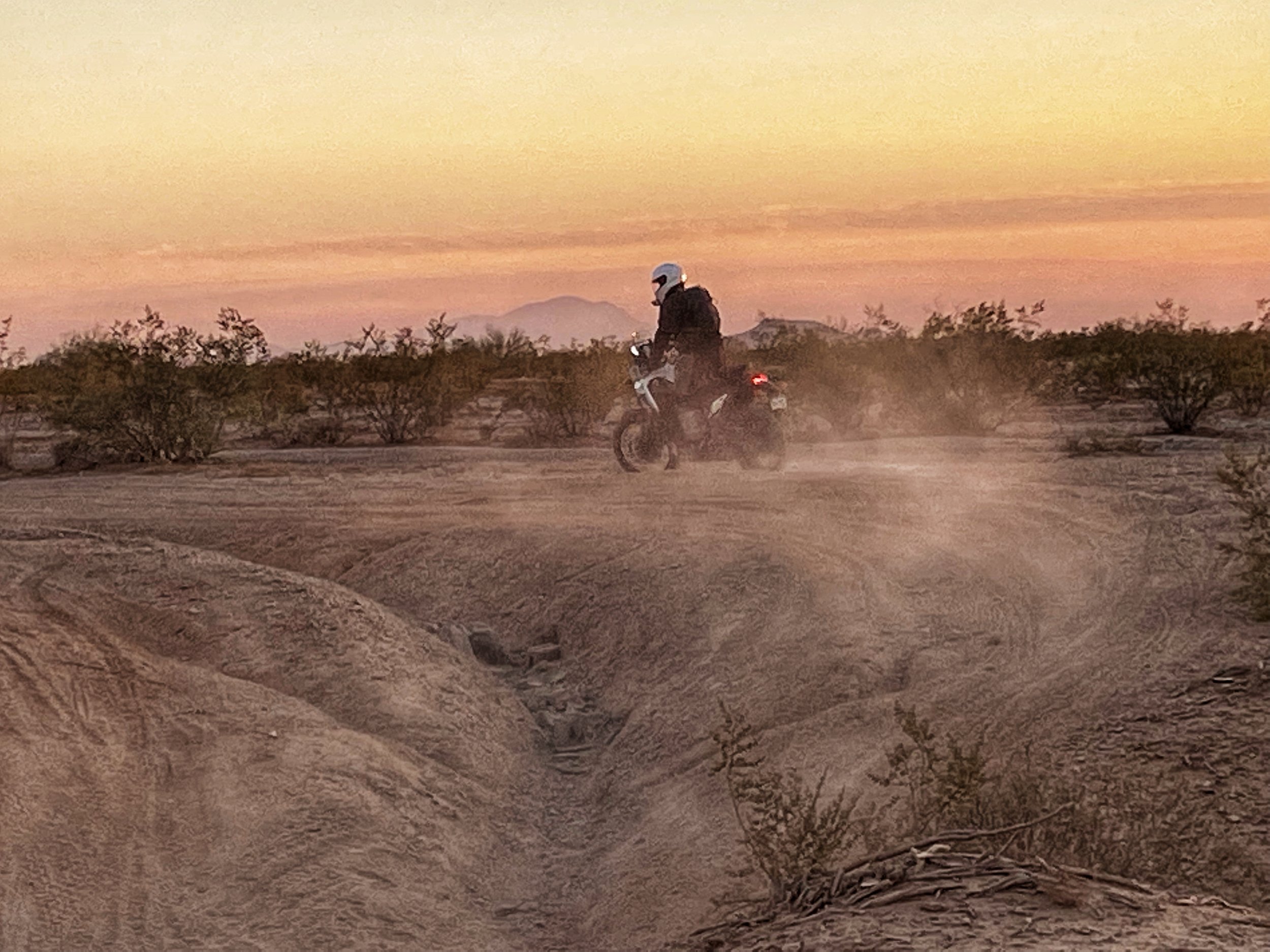Some of the Differences Between Riding on the Street and Riding in the Dirt
One of the main differences between street and dirt is the lack of traction. On dirt, we have a less likely hood of unwanted encounters with other roadway users, but we are operating on surfaces that are less than ideal. We can get into real trouble, really quickly, when we maneuver our bikes as though we have all the traction in the world. What we need to be considering is when we’re off road, we don’t have the stopping ability that we would have on the street. When we are on the street going 35 MPH and all the sudden, we need to STOP, it is going to take about 157.5-210 feet to get stopped (35 x 1.5 =52.5 feet x sec 3-4 sec).* That is about 10-14 car lengths to get stopped! (Average car length being 15). Now, throw yourself on less-than-ideal road surfaces, like a gravel road with marble like rocks. How far do you think it’ll take you to get stopped now? You might be asking yourself why it would take 157.5-210 feet to get stopped at 35 MPH when you are on pavement. Total stopping distance includes four parts:
One, you must see that there is a reason that you need to stop.
Two, your eyes then communicate with your brain that you need to stop.
Three, your brain then needs to communicate with your hands and feet that they need to work their magic on the controls and then finally,
Four, the brakes are applied and with any skill, you come to a stop in a reasonable distance. The first 3 steps all take roughly .7-1 sec per step to achieve, and the last step all depends on your ability to apply the brakes properly.
With all this being said, when we are riding off road, there needs to be a switch that we flick so that we adjust the way we think and operate the motorcycle. There is an increase in total stopping distance when off road as well as a difference with cornering. When we are riding off road, we want to always be on top of the motorcycle (obviously), but what I mean is when we are cornering, we want to always be weighting the outside peg and pushing the bike into the corner and then leaning to the outside of the corner (counterweighting), whether it be slow speed (less than 15 MPH) or higher speeds 15+ MPH. The reason being, when we are cornering at higher speeds, off road, we don’t have the traction that we do when we are on the street, so we want to be on top of the bike, weighting the outside peg so that in the event our traction brakes lose, we are on top of the bike and the bike slides underneath us and we stay with the bike. If you counter steer the bike, like you do on the street and the bike slides out, you are going down with the bike before you even know what happened. Now, when we are on the street at higher speeds, we have a lot more the traction than when we are on the dirt, we do the opposite. We counter steer the bike by pushing forward on the bars, lean our bodies in and forward into the corner and then pushing the bike more upright, which increases your traction and ground clearance. You might be asking yourself why we wouldn’t want to just use the same technique whether we’re off road or on the street. When you are on the street and you push the bike down into the corner like you would on the dirt, you are giving up all your margin of safety and ground clearance. There is only so much traction available and if you push the bike down in the corner, you are using up all the traction available and giving yourself zero traction to manage all the other things you might encounter on the street. Things to consider are crowned roads, obstacles, surface conditions, weather and temperature, to name a few.
Continue taking more training and learn as much as you can in this awesome sport we call adventure riding.
Less traction environment
*Reference: https://policedriver.com/explanation-of-time/

